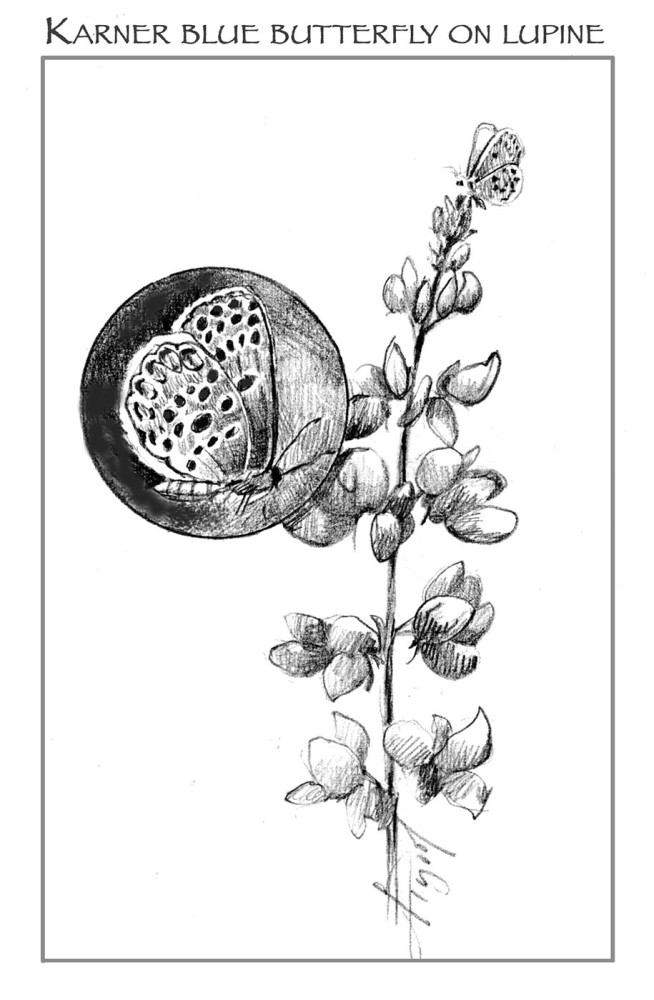
Pine barrens are certainly piney – but they’re not the least bit barren. They were so named not because they lack life, but because colonists found them unsuitable for raising cattle or growing vegetable and grain crops. Left behind by the glaciers more than 10,000 years ago, pine barrens are characterized by sandy, acidic soil where pitch pine and scrub oak are the dominant trees.
Pine barrens are home to a wide range of bird, mammal, reptile, insect, and plant species, including many that are rare or endangered. In fact, many of these species are found only in pitch pine/scrub oak barrens. They are also natural filters for stratified-drift aquifers, a source of clean drinking water. This makes pine barrens top-priority conservation areas and valuable research sites.
New Jersey’s million-acre pine barrens are somewhat famous, thanks in large part to a 1968 book by John McPhee. His work was influential in raising awareness of the importance of the Atlantic coastal pine barrens ecosystem and protecting these areas from development. Pine barrens are a small, yet integral, part of the woodlands in many parts of the northeastern United States and the province of Ontario. Long Island, New York, contains about 100,000 acres. In New England, extensive tracts are found in southern Maine’s Waterboro Barrens Preserve and Kennebunk Plains, both protected by The Nature Conservancy. Massachusetts has thousands of acres of pine barrens on Cape Cod, Nantucket, and Martha’s Vineyard. New Hampshire has pine barrens in Ossipee and Concord.
Pine barrens thrive on disturbance, particularly fire. Because the soil is dry, leaves and other organic matter serve as tinder. Pitch pine has thick, fireproof bark, and it depends on heat to make its cones open and release seeds. Fires that are low to the ground consume competing vegetation like white pine seedlings. Historically, lightning caused fires that rejuvenated the pitch pine forest. Today, protected areas often are managed with controlled burning.
Pine barrens offer varied terrain that is especially lovely in fall when the lowbush blueberry leaves turn brilliant red. The landscape is dense and tangled in places, open and airy in others. Besides pines (including red and jack), you’ll find red maple, gray birch, heath shrubs, ferns, sedges, and flowering plants, including native lupine – not to be confused with the garden variety that has escaped the confines of perennial beds and grows extensively in fields and along roadsides.
The pine barrens in Concord, New Hampshire, are home to the state butterfly, the Karner blue, which lives exclusively on lupine. When I visited Concord’s pine barrens, I thought I’d be lucky to see a Karner blue, but they were plentiful. It’s a conservation success story: the butterfly was brought back from the brink of extinction through a years-long joint effort of state and private organizations. Pine barrens harbor many other rare, endangered, or threatened lepidopterans as well, including the twilight moth, Edwards’ hairstreak moth, the beautifully patterned Phyllira tiger moth, and the frosted elfin and Persius duskywing butterflies.
Aerial insectivores such as the whip-poor-will and common nighthawk breed in barrens, which offer abundant insect meals, sandy soil for ground nesting, and lots of scrubby cover. Nighthawks and whip-poor-wills are increasingly uncommon, but Vermont naturalist Jason Mazurowsky found the two species together while conducting research one summer at the Ossipee Pine Barrens during a full moon. Amid the chorus of whip-poor-wills, he heard the booming sound of air rushing through the feathers of two diving nighthawks.
Shrub-nesting birds such as the Eastern towhee and brown thrasher also are found in the pine barrens, as are the vesper sparrow, grasshopper sparrow, horned lark, and upland plover, which are all threatened or endangered in some northeastern states. Another unusual denizen of pine barrens is the Eastern hog-nose snake (also called puff adder). It is endangered in New Hampshire, but still fairly common on Cape Cod: good news, unless you are a toad or an ophidiophobe (a person afraid of snakes).
Besides all of these animal and plant species, pine barrens attract many types of hiker, birder, paddler, and photographer. Not to mention writers, from poets like Walt Whitman to journalists like John McPhee. Like Whitman, a Long Island native, you may have “many a good day or half-day… wandering through those solitary cross-roads, inhaling the peculiar and wild aroma.”
Barrens? A misnomer if there ever was one.


Discussion *